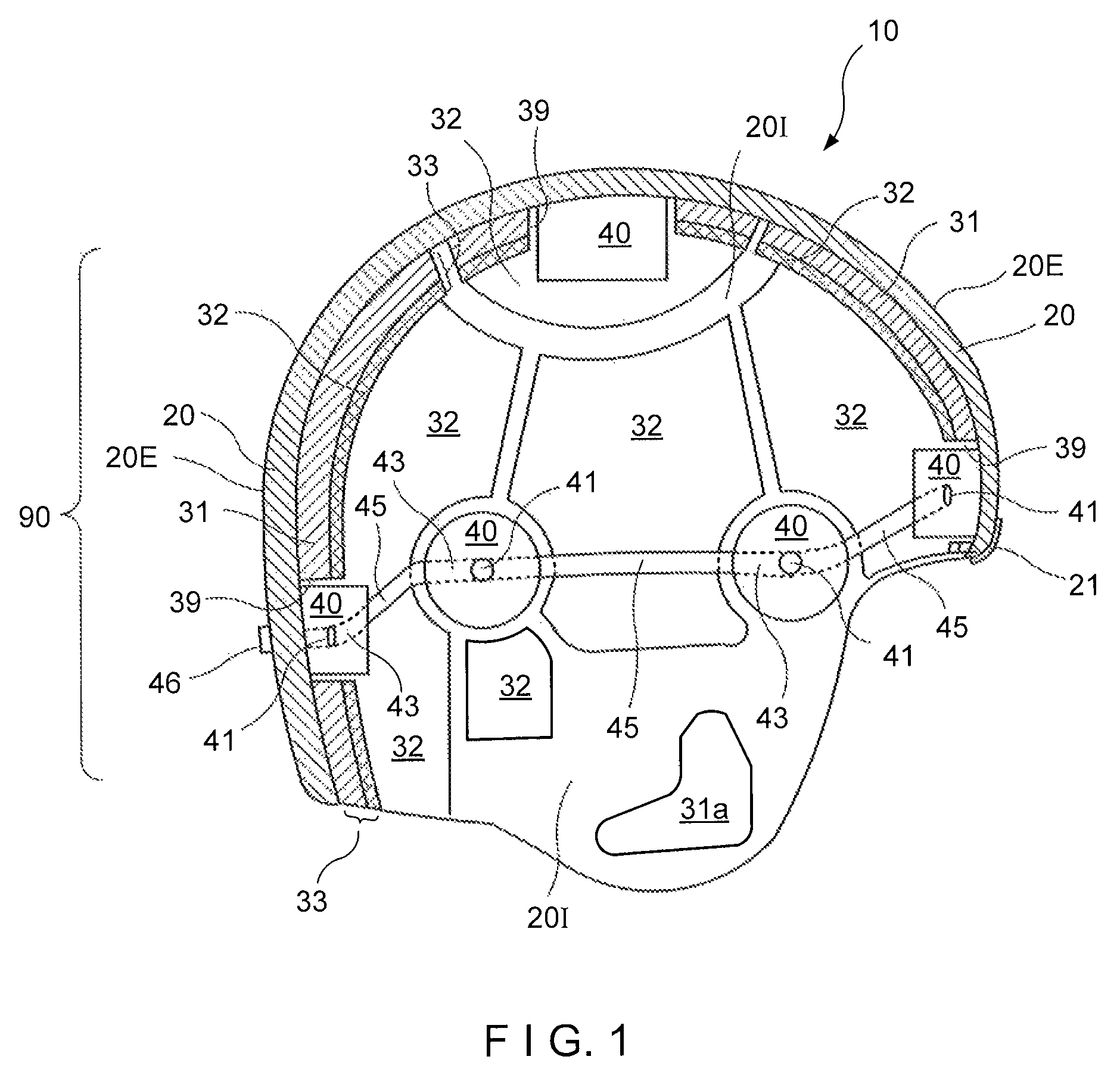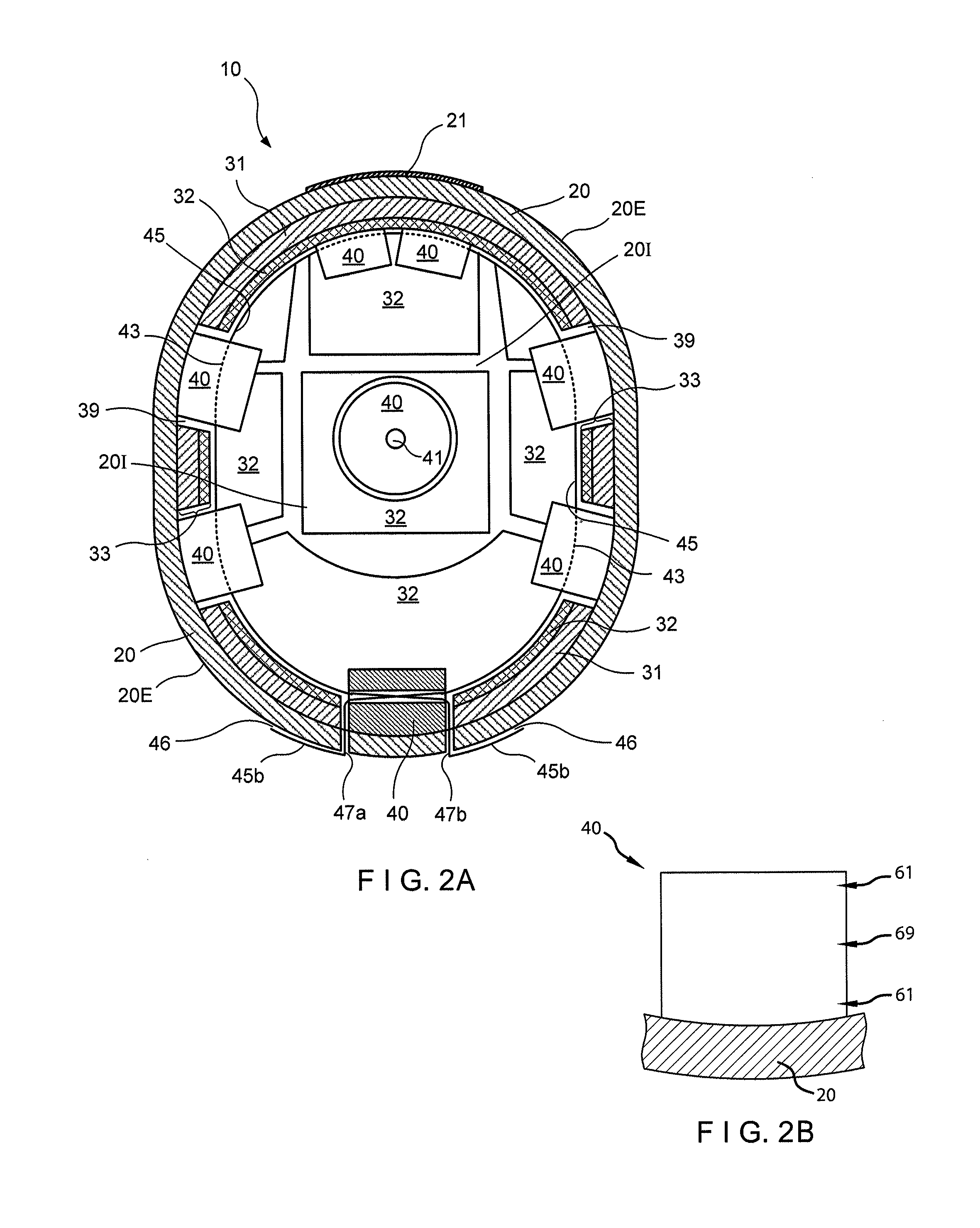Helmet with columnar cushioning
a columnar cushioning and helmet technology, applied in helmets, helmet covers, protective garments, etc., can solve the problems of severe cranial injuries, rotational or shear force on the head of athletes, and construction workers are often required to wear hard hats or other safety headwear, etc., to achieve sufficient elasticity, facilitate bending of the columnar support member, and the effect of sufficient elasticity
- Summary
- Abstract
- Description
- Claims
- Application Information
AI Technical Summary
Benefits of technology
Problems solved by technology
Method used
Image
Examples
Embodiment Construction
[0023]The present disclosure is generally directed to a protective helmet that may be configured to cover and protect at least a portion of a wearer's head. Referring to a preferred embodiment as shown in FIGS. 1-2, a helmet 10 preferably may include a shell 20. The shell 20 may include an exterior surface 20E and an interior surface 20I. The interior surface 20I may be preferably configured to fit and receive the wearer's head therein. One of ordinary skill in the art will understand that the helmet 20 may be made in a variety of sizes to fit ranges of head sizes, for example, ranges of the standard head sizes for children and adults, which can be made in small, medium, large, and extra-large sizes, for example. Additionally, the shell 20 may be preferably made of a hard and durable material, such as a high-impact resistant polycarbonate or a high-impact resistant thermoplastic, although other suitable materials can be used.
[0024]A plurality of vents may be preferably disposed abou...
PUM
 Login to View More
Login to View More Abstract
Description
Claims
Application Information
 Login to View More
Login to View More - R&D
- Intellectual Property
- Life Sciences
- Materials
- Tech Scout
- Unparalleled Data Quality
- Higher Quality Content
- 60% Fewer Hallucinations
Browse by: Latest US Patents, China's latest patents, Technical Efficacy Thesaurus, Application Domain, Technology Topic, Popular Technical Reports.
© 2025 PatSnap. All rights reserved.Legal|Privacy policy|Modern Slavery Act Transparency Statement|Sitemap|About US| Contact US: help@patsnap.com



